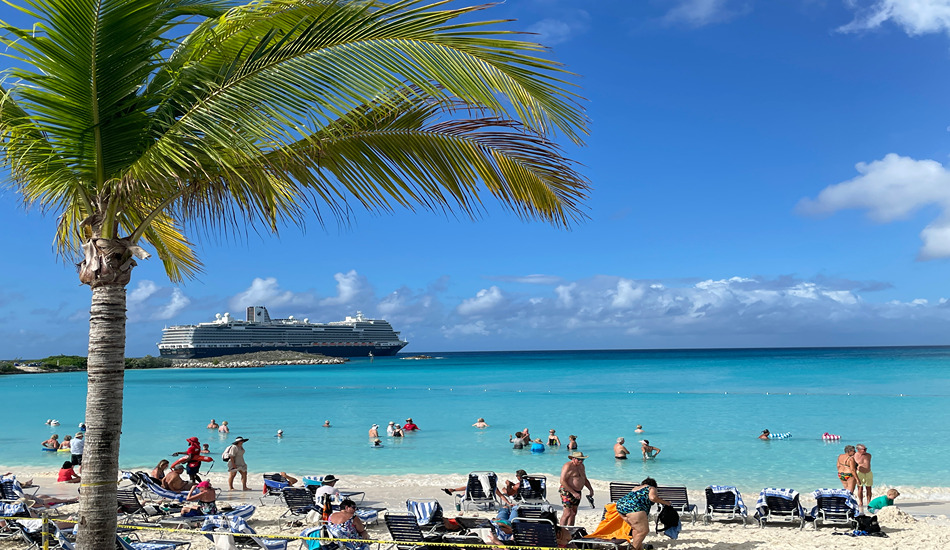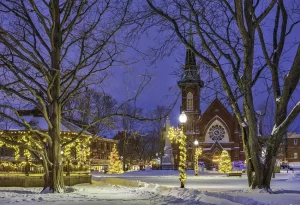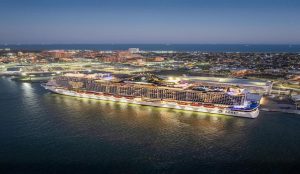Visits to Aruba and Curacao highlight a 9-day voyage on Holland America’s Rotterdam. Rounding out the adventure is the line’s private island in the Bahamas.
Having cruised the Caribbean before, we were interested in trying out a Caribbean vacation with a bit of European flavor. Fitting the bill were the islands of Aruba and Curacao, situated just north of Venezuela.
Hundreds of years of Dutch rule have left their mark on these islands, which are constituent countries of the Kingdom of the Netherlands. It seemed most appropriate to visit these Dutch isles on a Holland America Line ship, so we did, on a recent 9-night cruise aboard the 2,688-passenger Rotterdam.
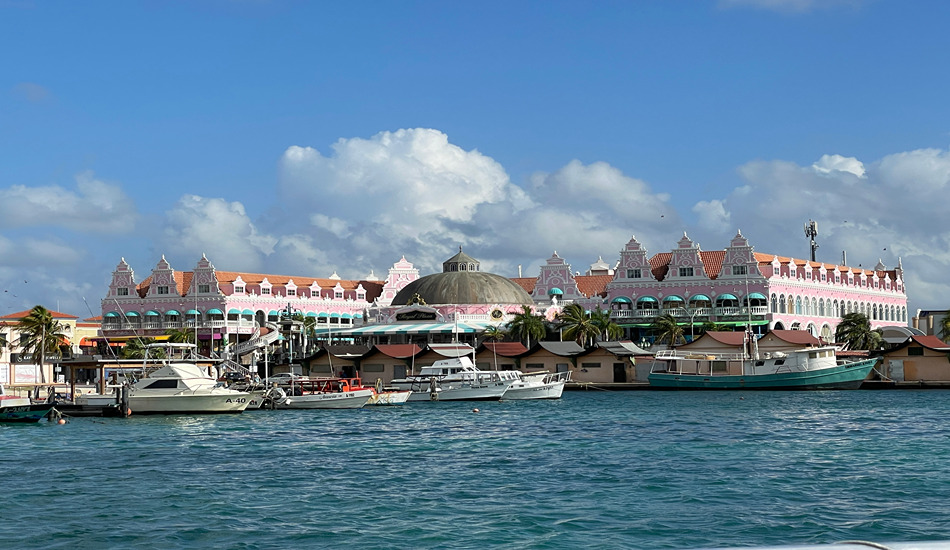
Oranjestad, Aruba
Two Days in Balmy Aruba
We embarked in Fort Lauderdale, Florida and enjoyed two relaxing days at sea before docking for two full days in Aruba’s capital city of Oranjestad. The bubble-gum pink, colonial-style Royal Plaza Mall was our first sight from the ship and the bright colors continued into the downtown shopping area. We spent most of our first day on this “One Happy Island” basking in the gently rolling turquoise waters of picture-perfect Eagle Beach, where wind-sculpted Fofoti trees grow out of the powdery white sand. Eagle Beach is one of several stunning strands running along Aruba’s western coast.
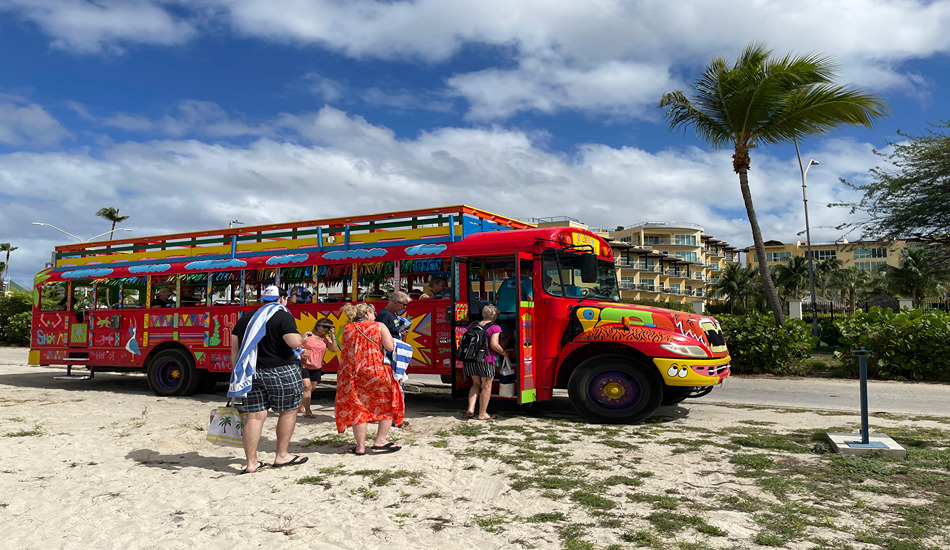
Kukoo Kunuku party bus, a free-spirited shore excursion option in Aruba
We washed off the sand, assessed our sunburns, then took advantage of our overnight in port with a nightlife excursion aboard a Kukoo Kunuku party bus. The bright red bus, equipped with maracas for each passenger, traversed the city streets and arid countryside with music blaring from its open windows. We stopped at a beach for a Champagne toast, enjoyed an oceanfront dinner al fresco, and visited two bars for dancing and drinks.
On our second day in Aruba, we took a dive in the submarine Atlantis. Blue tang and sergeant majors peeked in the windows as our guide provided comical yet informative narration. We glided past coral fields and shipwrecks before touching down on the sandy ocean floor. Other excursions offered in Aruba included snorkeling, scuba diving, a sunset cruise and bus tours around the island.
Exploring Curacao
We woke up the following morning in Willemstad, the capital of Curacao, the Dutch Caribbean’s largest island. The short walk from the harbor to Willemstad’s historic center, a UNESCO World Heritage site, was a pleasant one with waves crashing against rocks adjacent to the path and wild iguanas eyeing us from their perch atop boulders. The path continued through the Rif Fort, built in 1828 to protect the entrance of St. Anna’s Bay but now an attractive open-air mall.
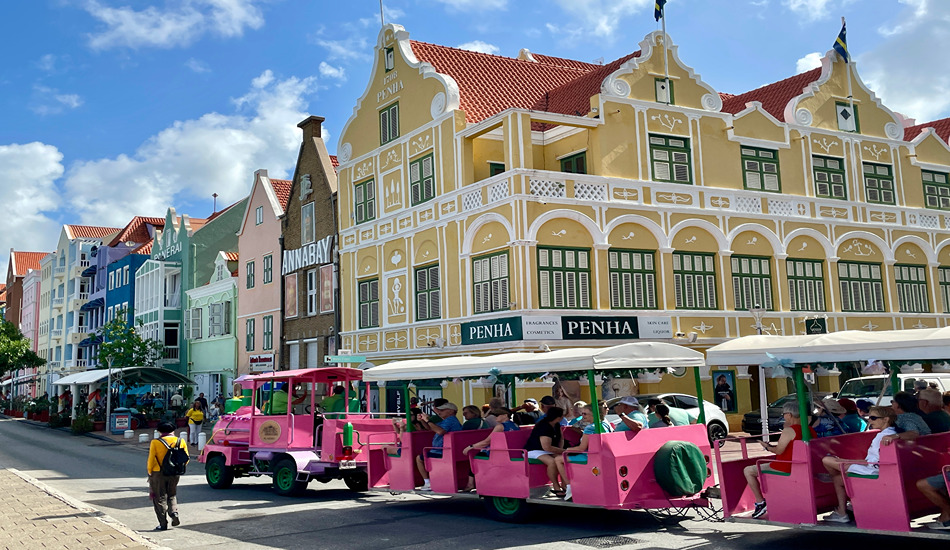
Willemstad, Curacao
Once past the fort, we could see across the bay the unmistakable stretch of waterfront known as Handelskade. The row houses lining the water sport distinctly Dutch architecture, but the colorful paint jobs are uniquely Curacaoan and are seen on postcards, t-shirts and license plates everywhere. To get a closer look, we strolled across the Queen Emma Bridge. Built in 1888 but renovated several times since, the pedestrian bridge affectionately known as “the swinging old lady” floats on pontoons and swings open to let marine traffic into and out of the harbor.
After exploring on our own, we took a city bus tour. The towering Queen Julianna Bridge offered a panoramic view with our cruise ship in the distance, and each street we drove was lined with homes and businesses more brightly painted than the last. Along the way, we sampled drinks made with the island’s signature liqueur, Blue Curacao. Other cruise passengers spent their time in Curacao touring the Hato Caves, visiting aloe vera and ostrich farms or sunning at the beach.
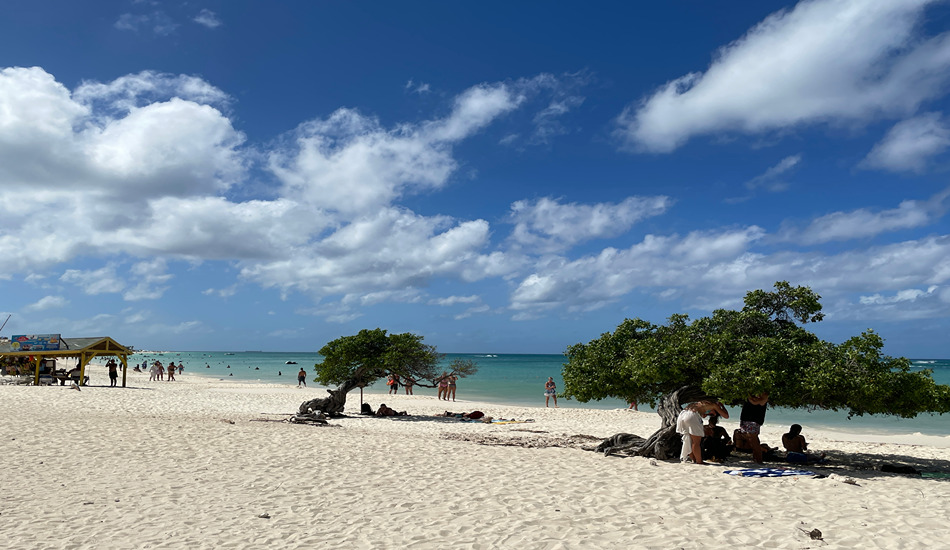
Fofoti trees punctuate Aruba’s Eagle Beach.
The Dutch influence on both islands is seen and heard beyond the architecture. Dutch is an official language, and windmills and wooden shoes are found in gift shops. Though each island is autonomous and controls its own internal affairs, the Netherlands controls foreign affairs and national defense. Bonaire is the third in the trio of Dutch islands in the Southern Caribbean (commonly referred to as the “ABC Islands”) and also has a cruise port, but it was not a stop on our voyage.
Private Paradise
Following two more sea days, our final port of call was Half Moon Cay, Holland America’s private island in the Bahamas. Here, many simply sunbathed on the gorgeous beach or frolicked in the crystal-clear water. Others went horseback riding, biking, snorkeling or kayaking. We chose an excursion where we swam with sting rays, fed them fish, kissed sea cucumbers and ogled at conch as they wriggled from their shells.
Shipboard Pleasures on the Rotterdam
Built in 2021, the Rotterdam is Holland America’s newest ship and the seventh in the company’s 150-year history to bear that name. She is one of the fleet’s largest, yet offers a relatively intimate experience when compared to the mega-ships it docks alongside in Fort Lauderdale. The onboard experience is also more relaxed and sophisticated. You will not find water slides or rock-climbing walls, nor any belly-flop or hairiest-man competitions.
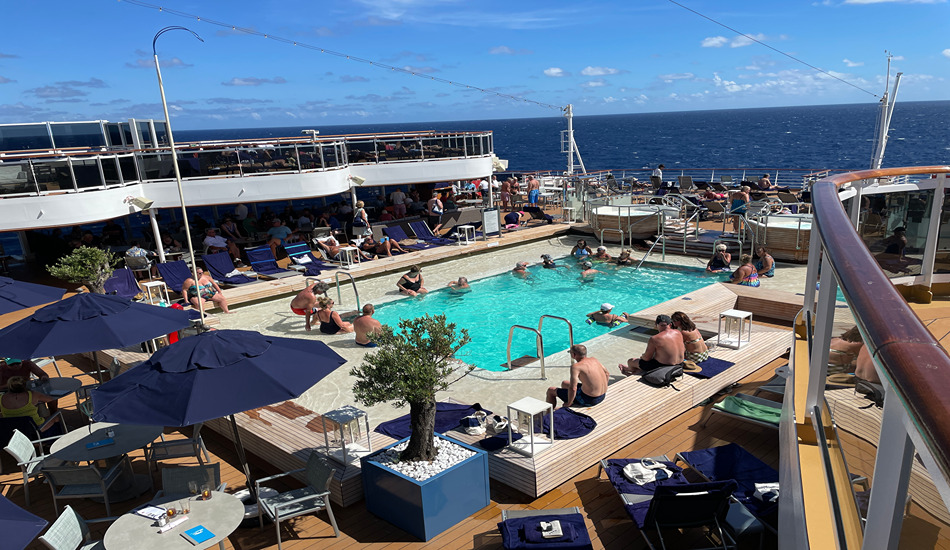
The Rotterdam’s aft Sea View Pool
The mid-ship Lido Pool and aft Sea View Pool areas were always well-populated, especially on sea days. Outdoor options for the more active included a jogging track, shuffleboard courts, cornhole boards, ping-pong tables and a basketball/pickleball court. Among the organized activities were arts and crafts lessons; trivia sessions; movie screenings; beer, wine and martini tastings; and mixology classes.
The ship came alive at night with multiple entertainment options. Charismatic dueling piano players belted out familiar hits in Billboard Onboard, a band jammed to rock classics in the Rolling Stone Rock Room, and a blues band, complete with horn section and soulful vocalists, performed R&B, Motown and more in B.B. King’s Blues Club.
World Stage, the ship’s main stage, provided an immersive experience with theater-in-the-round seating and floor-to-ceiling wrap-around LED displays. Here, entertainment rotated nightly with comedians, singers, a dance group and our personal favorite, the Island Magic Steelband, taking the stage.
The Rotterdam’s Dining Delights
Day or night, dining options were varied and plentiful. Breakfast, lunch, dinner and late-night snacks were served in the Lido Market from themed stations like Breadboard, Distant Lands and Wild Harvest. Burgers, hot dogs and fries were made to order throughout the day at Dive-In, and NY Pizza & Deli fired up pizzas until midnight. The Grand Dutch Cafe offered Dutch specialties like pea soup, herring, Dutch pancakes and softball-sized cream puffs called Bossche bols.
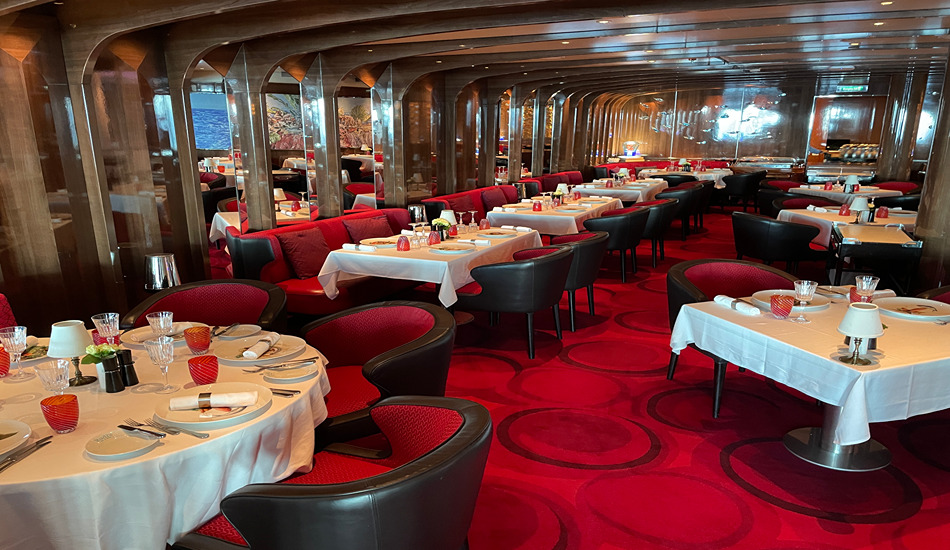
Rudi’s Sel de Mer, a fine dining restaurant on Holland America’s Rotterdam
Excellent multi-course dinners were served in the main dining room, but cruisers could step up their culinary experience at additional-charge restaurants. Canaletto dished out osso buco and freshly-made pasta. Tamarind served up superb pan-Asian cuisine with ocean views. Pinnacle Grill offered steaks and seafood in an upscale setting, and Rudi’s Sel de Mer exemplified fine dining with classic French dishes, fresh seafood and the best filet mignon.
Taking the stairs and walking the Rotterdam’s public spaces not only allowed us to burn off some excess calories from these meals (not that we were counting), but to behold an impressive array of artwork. Largely music- or nature-themed, the style and media varied widely. Vinyl records carved into likenesses of famous artists, junk art collages of wild animals and abstract arrangements of deconstructed musical instruments are just a few examples.
From the Dutch Caribbean to the Dutch mainland, with plenty of non-Dutch countries in between, the Rotterdam will offer various Caribbean itineraries through early 2024 before spending the summer cruising Northern Europe, including stops in the Netherlands.
For more cruise information, be sure to Subscribe to Leisure Group Travel for FREE
Story and photos by Jeremy Mink
Lead Photo: The Rotterdam in Half Moon Cay, Holland America’s private island in the Bahamas.


